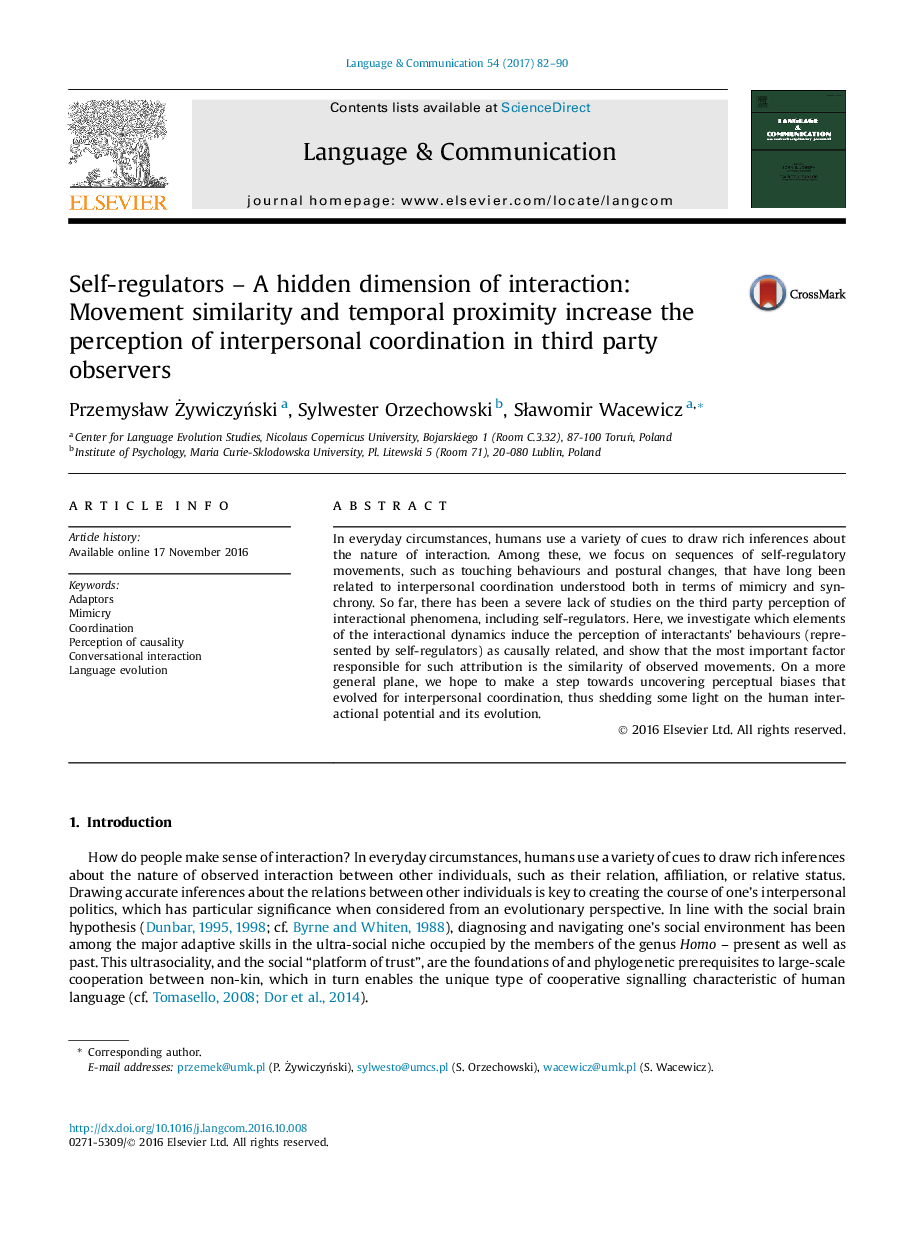| Article ID | Journal | Published Year | Pages | File Type |
|---|---|---|---|---|
| 5042914 | Language & Communication | 2017 | 9 Pages |
â¢Self-regulatory movements and their perception are of direct interest to the theory of the cooperative signalling characteristic of language.â¢Movement similarity and temporal proximity are the most perceptually salient characteristics of self-regulators.â¢The perceptual biases towards mimicry and synchrony could have evolved for interpersonal coordination.
In everyday circumstances, humans use a variety of cues to draw rich inferences about the nature of interaction. Among these, we focus on sequences of self-regulatory movements, such as touching behaviours and postural changes, that have long been related to interpersonal coordination understood both in terms of mimicry and synchrony. So far, there has been a severe lack of studies on the third party perception of interactional phenomena, including self-regulators. Here, we investigate which elements of the interactional dynamics induce the perception of interactants' behaviours (represented by self-regulators) as causally related, and show that the most important factor responsible for such attribution is the similarity of observed movements. On a more general plane, we hope to make a step towards uncovering perceptual biases that evolved for interpersonal coordination, thus shedding some light on the human interactional potential and its evolution.
